-
softwear exhibition

26 October 2020 - 28 November 2020
Through different works of knitted software art the “Softwear” exhibition sheds light on the shared nature and historical connection between software and knitting. In three artworks made with software and a knitting machine, code and yarn come together to blur the boundaries between what is soft and what is hard, challenging the gendered associations of both computing and textile. The artworks build on feminist theories and curious encounters with technology, and ask the viewer to look for patterns and deviations of ones and zeros, repetition, symmetry, randomness, and manual embodied labour. By deeply entangling software and knitting, the exhibition seeks to demystify the pasts, presents and futures of computer science, making the field more approachable to those who have been historically pushed away.
The pieces in this exhibition have been knitted in cotton yarn using a Silver Reed SK840 knitting machine and DesignAKnit software. The code that generates the patterns was written in Javascript, using the open-source library p5.js. The piece “Ada’s Sol” uses Java and Processing.
Artist Talk
“Exploring feminist entanglements of software and knitting”
Time: Monday 2 November 2020 12.15 - 13.00
Place: Online. Link here.
Workshop (cancelled due to new corona restrictions in Stockholm)
“Learn how to knit binary code”Time: Thursday 5 November 2020Place: KTH Library. Sign up here.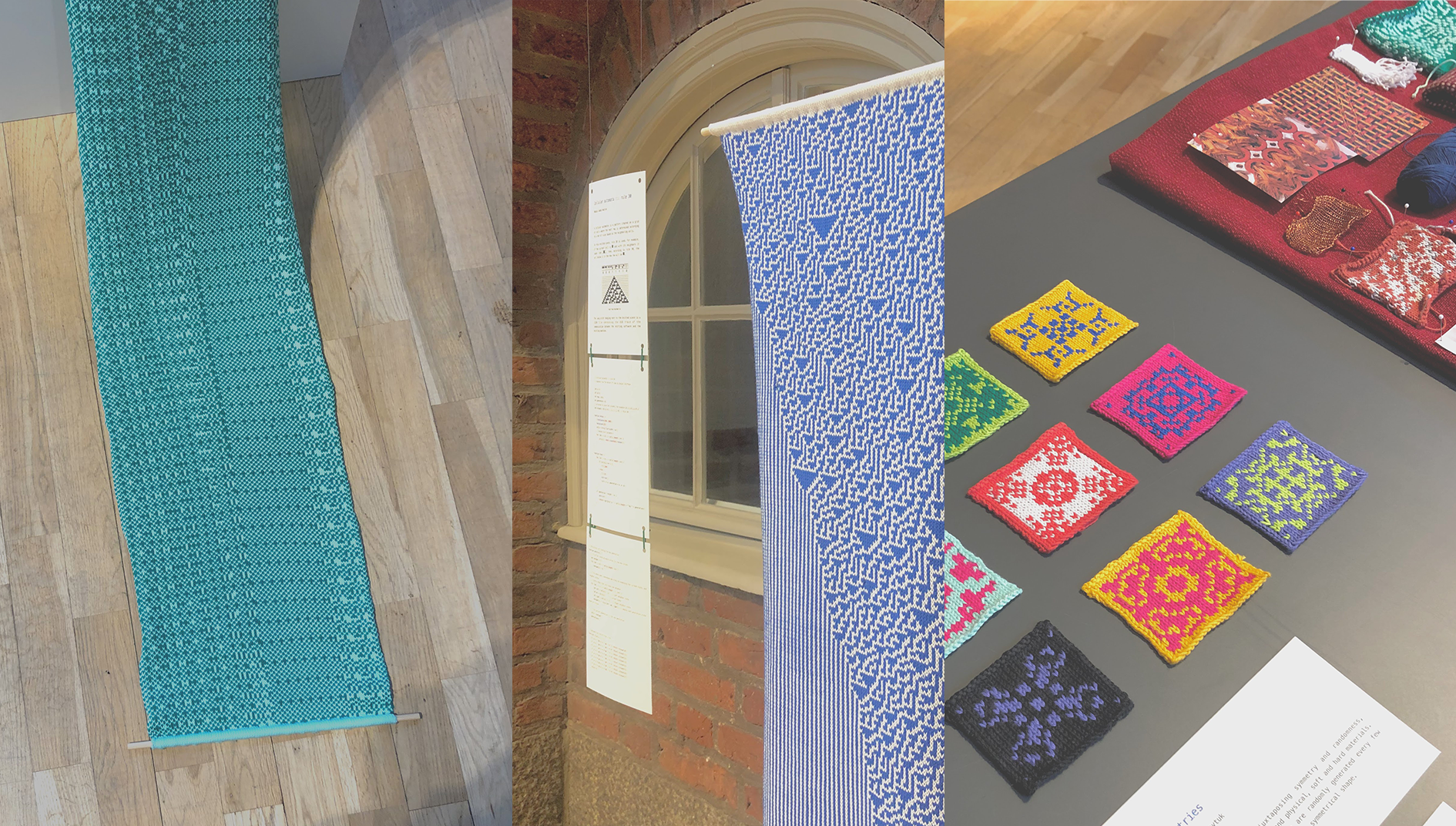
Special thanks to:
Marie Louise Juul Søndergaard, Andreas Almqvist, Nicolas Harrand, Orestis Floros.
Erik, Thomas, Jonathan and Benoit from rethread.
Mikko and Lenita from the KTH Library.
The Middla lab - for the knitting machine!
This project is part of rethread, funded by CASTOR Software Research Center at KTH.
-
a softwear collage
The end of October brings an end to softwear explorations (for the moment), and I’ve been preparing a small exhibition in the Library at KTH Royal Institute of Technology. The exhibit will be up for a few weeks, and it will include some knitted pieces and a collectively curated collection of small artifacts and prints.
. : . : . : .
Here’s where I need your participation! I’d like to add your own objects to the exhibit. It will end up looking like something below, on display in a glass box (no touching, so it’s corona safe) and will be up for a few weeks starting October 26th.
. : . : . : .
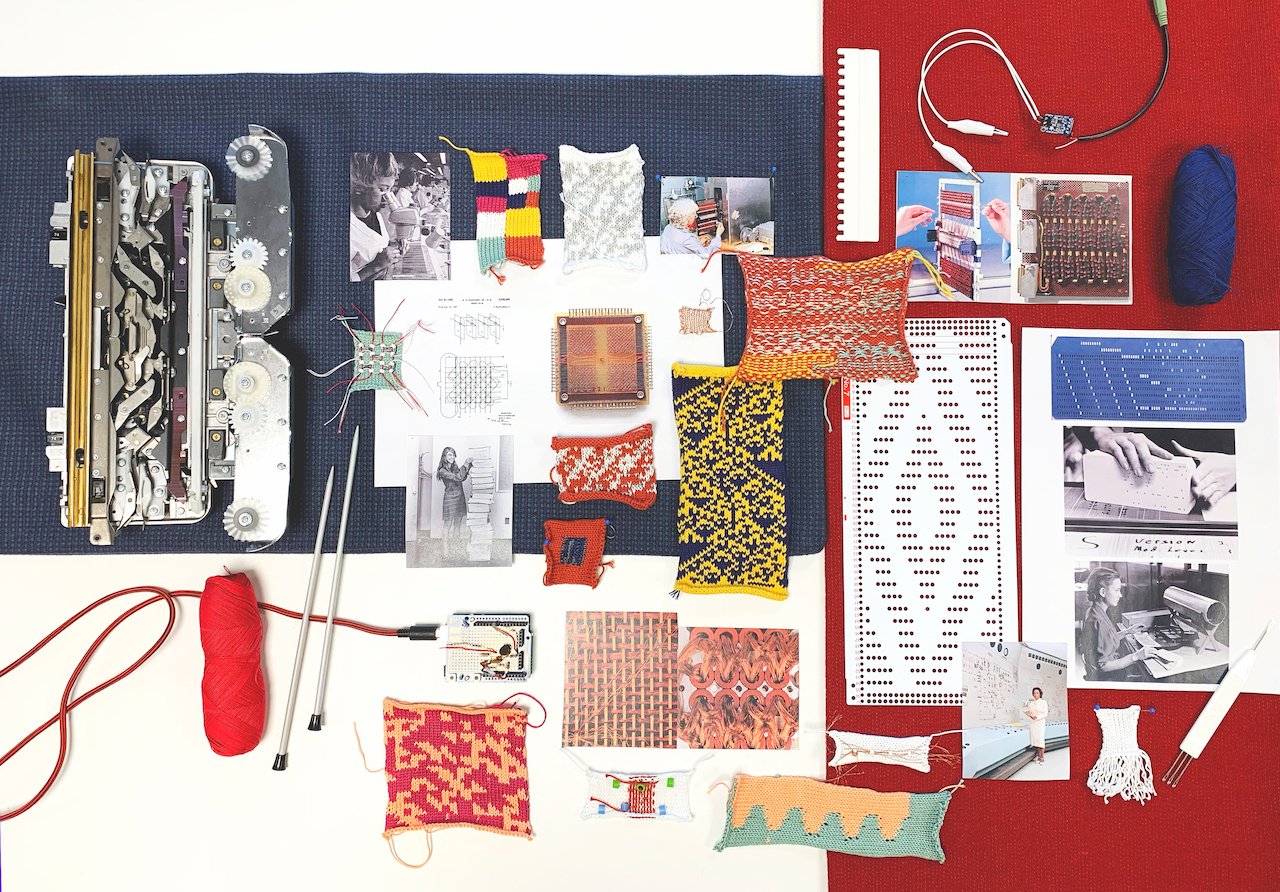
I’m looking for any object that has to do with software and knitting. But also close to hardware / computation / textiles / weaving / circuits / patterns / cables / threads / sequences / algorithms / code
Objects might be:
- punchcards, objects that resemble or use punchcards (for example a music box)
- tools, such as knitting needles, machine parts
- books, printed patterns, photographs
- swatches, knitted items, yarns, threads
- vintage electronics, devices
- poems, drawings, schematics
If you’d like to contribute, please email me or reach out on social media. I can come pick up your items in Stockholm.
Thank you! 🦕
-
peering into 'the black box'
peer (verb) UK /pɪər/ US /pɪr/ 1: to look narrowly or curiously
peering (noun) /pɪərɪŋ/ 1: the exchange of data directly between Internet service providers, rather than via the Internet.
I know that the literal ‘black box’ that sits on the desk next to the knitting machine is in charge of transferring the data of knitting patterns from the computer to the knitting machine, which then moves its needles accordingly to create a two color pattern. But I had no understanding of how it actually does this. Does it send a message for each row with 0s and 1s depending on which position the needle should be in? Is it encrypted? Could I make my own program to control this box?

-
knitting speakers
A few weeks ago I came across Kobakant’s documentation on kitting a speaker. Their tests were inspired by Piem Wirtz and Karla Spiluttini’s research called betaKnit, who’s design process and findings inspired me to try knitting a speaker myself, and possibly incorporating it into a larger piece.
The volume that these speakers produce is very low, which is interesting because it enables a closeness, softness and ‘touch’ which is already a quality of many knitted fabrics. The example that betaKnit provides is a Sound Hoodie, a wearable incorporating knitted speakers close to the ears.
To make the speaker, I used the circuit from Kobakant. In the first test I made, I knit copper thread into a small mesh, placed a small piece of paper underneath to act as a membrane, and a neodymium magnet under that. I used the Adafruit PAM8302A amplifier (bought from Electrokit).

-
knitting conductive threads and yarns
A few tests with conductive threads/yarns. At our lab the three threads we have available are (1) a conductive copper thread from Karl Grimm - I believe this company doesn’t exist anymore - which is scratchy and stiff, but works great for soldering components together like wire, (2) a stainless steel thread from the Lilypad series bought at Electrokit, which is softer to touch and magnetic, and (3) a highly resistive yarn which I believe is polyester and steel (seems like it was purchased at Uppingham Yarns), which is not adequate for connecting components, but would work great for pressure, stretch and touch sensors - and this one is super nice to knit with since it’s actual yarn, not thread.
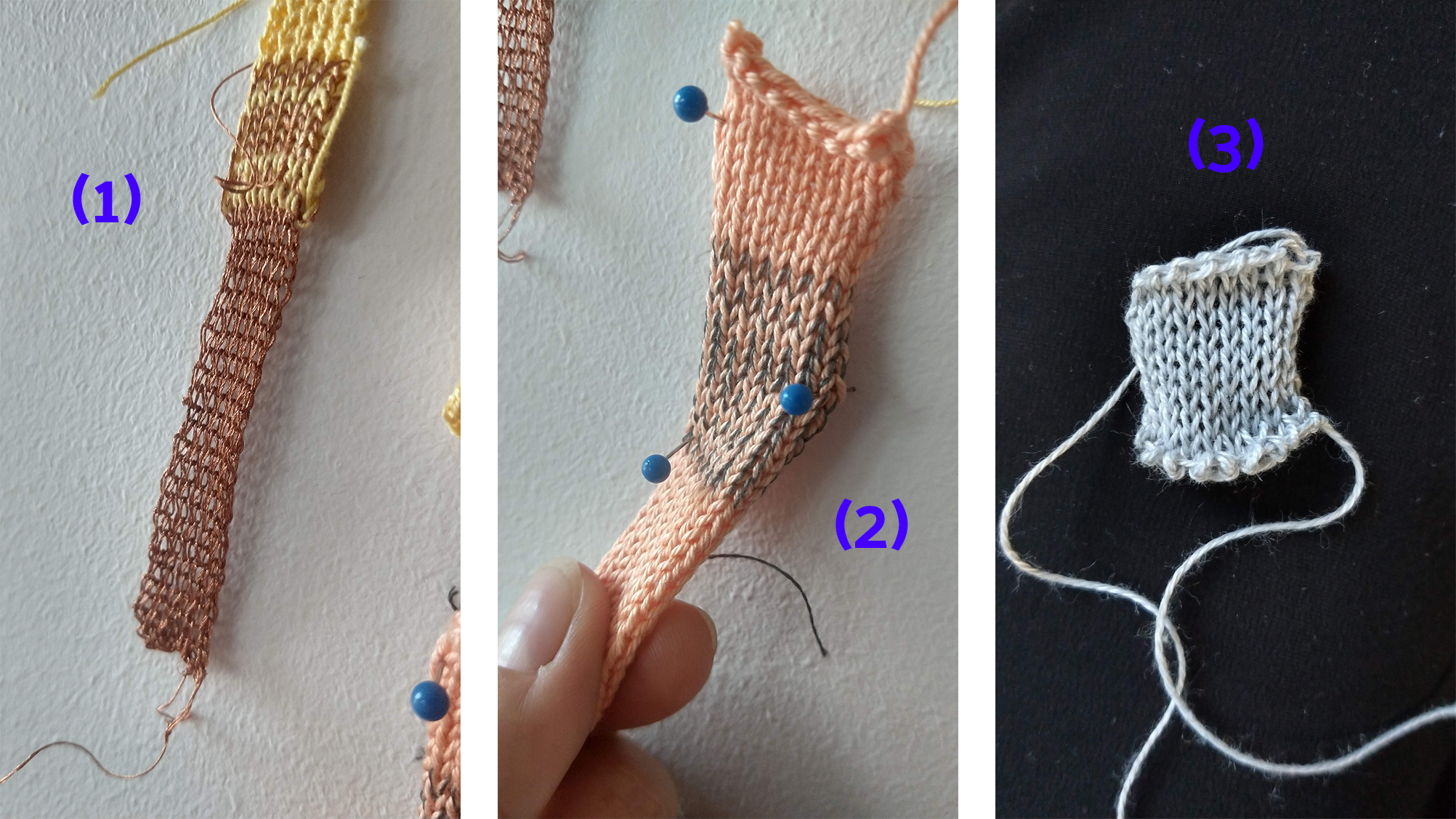
-
on bugs
A bug, in computer science, is “an error, flaw or fault in a computer program or system that causes it to produce an incorrect or unexpected result, or to behave in unintended ways.” Software bug - Wikipedia.
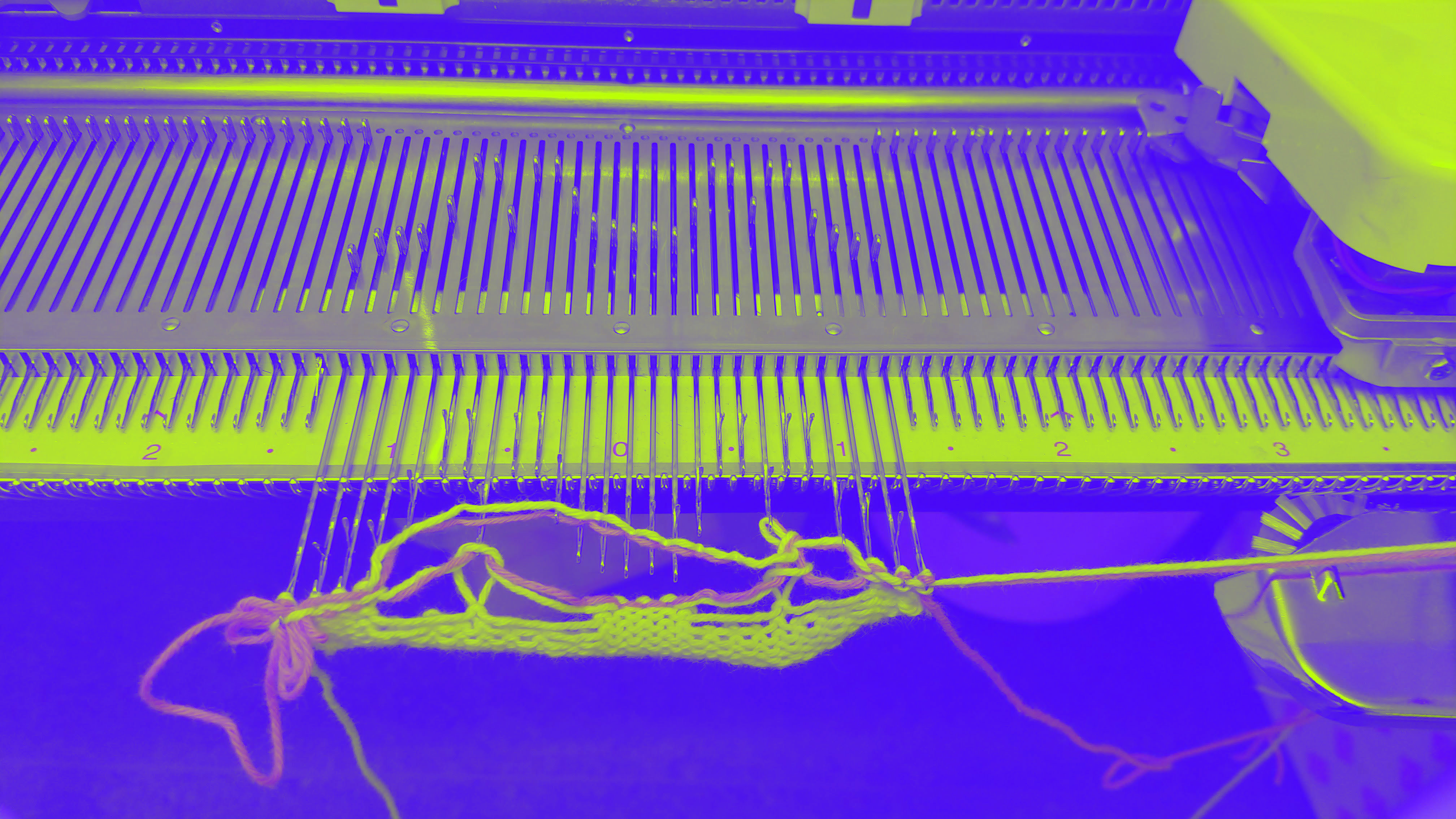
-
cellular automata
Cellular automata usually consist of a grid of cells, where the state of the next cell (the one below, if they are stacked) depends on the current state of the cell and its neighbors’ states.

-
file formats for the knitting machine
The knitting machine I have access to (SK840) uses DesignaKnit (DAK) for creating patterns and controlling the machine’s needle placement automatically. DAK supports a few file formats for stitching patterns: .stp, .pat and .dat. I’ve taken a closer look at each of these types, with the hopes of reverse-engineering them, or at least understanding them well enough to create my own files.
-
knitting data
“knitting is a living tradition—it’s physical knowledge of a culture. Knowledge of language dies so quickly. It’s awesome to find a sweater and look at the language of it—to see how it’s made, what yarn was used, and how problems were solved. A sweater is a form of consciousness.” ― Sabrina Gschwandtner, Knitting is…
Last week I opened a thread on twitter asking people to share their best software + knitting references. I’ve collected all the recommendations and my own references in an Are.na board: https://www.are.na/nadia-cw/software-knitting-feminisms
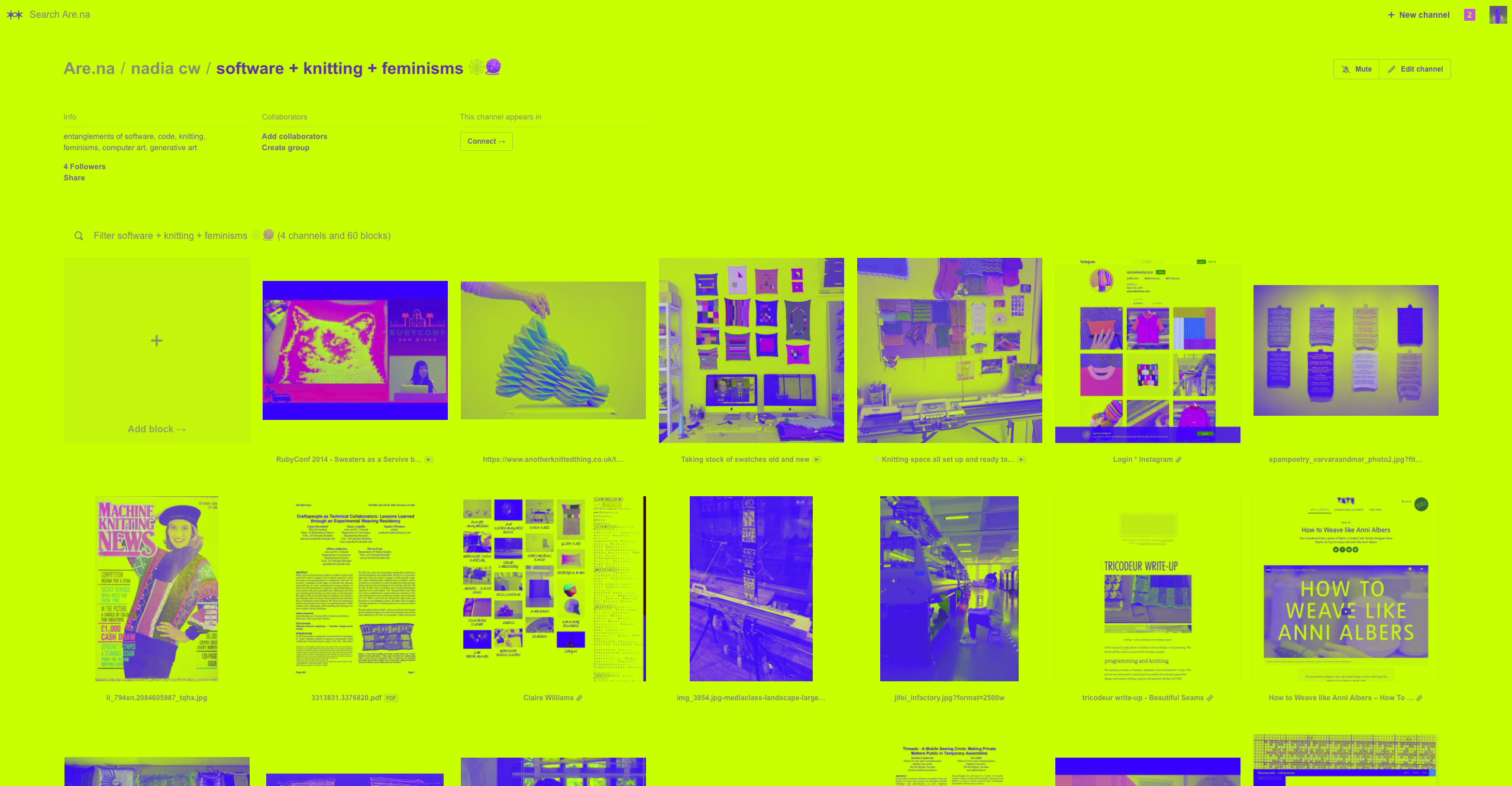
-
stitching experiments
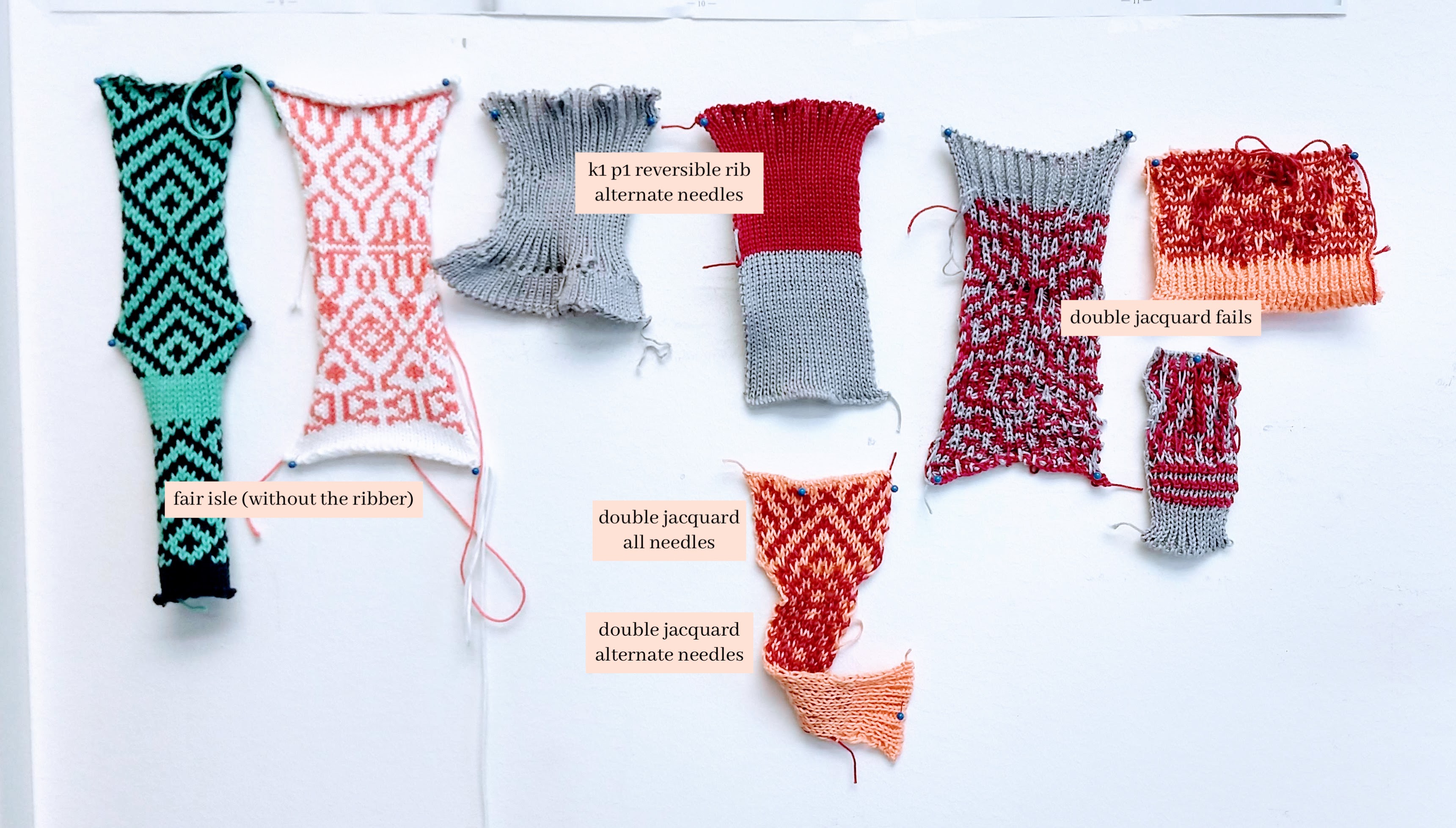
A few quick reflections on different knitting techniques available with the machine (and some failures).
-
first steps with the knitting machine

I’ve started this blog as way to document my design and art explorations on knitting and software. I’m interested in the intersections, historical entanglement, and future possibilities of working with software and knitting machines together.
My work will focus on machine knitting, specifically, I’ll be using the model Silver Reed SK-840 which I have access to at the MID department at KTH. I’ll be using yarns that are also available to me here in Stockholm, Sweden and online.